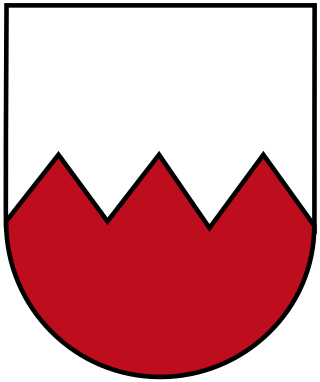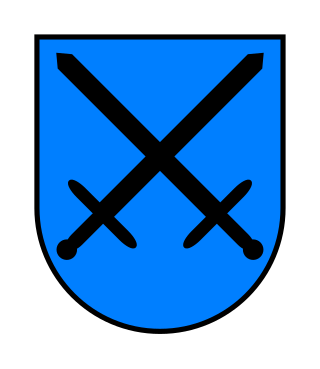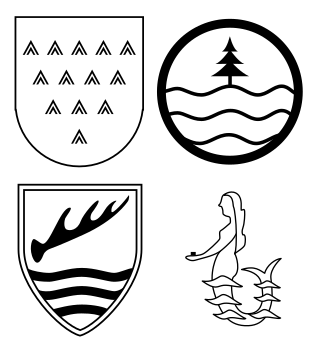History
The 344th Infantry Division was formed on 25 September 1942 in France from personnel from Wehrkreis V.
After her training, she was sent in November 1942 to the Bordeaux sector within LXXX. Armeekorps of the 1st Army in Heeresgruppe D. One of its regiments was the Indian Infanterie-Regiment 950. In August 1944, the Division was sent to Normandy, without the Infanterie-Regiment 950, where it suffered heavy losses and was disbanded.
In September 1944 a new 344th Infantry Division was formed which initially fought in the Hürtgen Forest. In the spring of 1945 it was sent to the Eastern Front.
Parts of the division defended the Oder between Krappitz and Cosel during the Upper Silesian offensive. After the 1st Ukrainian Front had broken through south of Cottbus in mid-April, Hitler demanded from the Jolasse Group that the 344th Infantry Division near Drebkau, the remnants of the Führerbegleitbrigade (Major General Otto Ernst Remer) and the remnants of the 10th SS Panzer Division Frundsberg near Spremberg, attacked northwards into the flank of the advancing 1st Ukrainian Front.
This ended in failure, and all German units were surrounded by Soviet troops in the Kausche Pocket and taken prisoner.
Army Group A was the name of several German army groups during World War II. During the Battle of France, Army Group A was composed of 45½ divisions, including 7 panzer divisions. It was responsible for breaking through the heavily-forested Ardennes region. The operation, which was part of Fall Gelb, was resoundingly successful for the Germans, as the army group outflanked the best troops of France and its allies, eventually leading to France's surrender.

The German 73rd Infantry Division or in German 73. Infanterie-Division was a German military unit which served during World War II. The division consisted of more than 10,000 soldiers, primarily of the infantry branch, with supporting artillery. The division was only semi-motorized and relied on marching for the infantry units and horse-drawn transport for most of the support equipment, especially the artillery.

The 13th Panzer Division was a unit of the German Army during World War II, established in 1940.

The 91st Air Landing Division was a German Army infantry division in World War II.

The 275th Infantry Division was an infantry division of the German Army during World War II.

The German 5th Infantry Division was formed in October 1934 and mobilized on 25 August 1939. The division's troops were garrisoned in Konstanz, Ulm, and Freiburg. When formed, the division consisted of the 1st, 2nd, and 3rd battalions of the 14th, 56th, and 75th Infantry Regiments, the 1st, 2nd, and 3rd Battalions of the 5th Artillery Regiment, the 1st battalion of the 41st Artillery Regiment, and assorted 5th Division support units.

The 26th Infantry Division was a pre-World War II German Infantry Division of the 1st mobilisation wave. It was mobilised for World War II on September 26, 1939, disbanded on September 10, 1944, near Radom and reformed as the 26th Volksgrenadier Division on September 17, 1944, near Poznań by absorption of the new 582nd Volksgrenadier Division of the 32nd mobilisation wave. Remnants of the Division entered U.S. captivity in the Harz region in 1945.

The 121st Infantry Division was a German Wehrmacht division in World War II. It was a part of the German XXVIII Army Corps. In September 1941 the formation, on arriving in Pavlovsk, Saint Petersburg; engaged in the siege of Leningrad. By October 1941 it was down to 40% of its authorized strength and 3 infantry battalions had to be disbanded due to high casualties. In 1944 it was involved in the retreat from Leningrad through the Baltic states wherein it fought in the Battle of Pskov. It remained in the Courland pocket until the end of the war.
The 21st Infantry Division was a German military unit which fought during World War II.

The 305th Infantry Division was a German Army unit that saw extensive, front-line action during World War II. This division was present at the Battle of Stalingrad, the Battle of Monte Cassino, and surrendered to U.S. Army's 88th Infantry Division in Northern Italy near Trento in late April 1945.

The 32nd Infantry Division of the German Army was mobilized on 1 August 1939 for the upcoming invasion of Poland. At that time, it consisted of the usual German infantry division elements: three infantry regiments of three battalions each, one three-battalion regiment of light artillery, one battalion of heavy artillery, a Panzerjäger (anti-tank) Battalion, a reconnaissance (Aufklärungs) Battalion, a Signals Battalion, a Pioneer (Engineer) Battalion, and divisional supply, medical, and administrative units.

The 97th Jäger Division was a light infantry Division of the German Army during World War II. It can trace its origins to the 97th Light Infantry Division which was formed in December 1940. It was then redesignated the 97th Jäger Division in July 1942. It fought in the Battle of Kursk and suffered heavy losses. It was then transferred to the lower Dnieper river area and fought well during the retreat through Ukraine. It was transferred to Slovakia in October 1944 and surrendered to the Red Army near Deutschbrod in May 1945.

The 15th Infantry Division was an infantry division of the German Army during the interwar period and World War II, active from 1934 to 1945.

The 389th Infantry Division was a German division of the Wehrmacht in the Second World War, which fought for example in the Battle of Stalingrad. It was formed on 27 January 1942 in Milowitz.

The 712th Infantry Division was a German Army infantry division in World War II.
The 129th Infantry Division was an Infantry Division of the German Army during World War II.

The 88th Infantry Division was a major fighting formation of the German Army (Wehrmacht). It was created in December 1939, and first saw combat in the Battle of France, and was then posted to security duties. From December 1941, the division was shifted to the southern sector of the Eastern Front, where it fought until February 1944 when it was encircled near Cherkassy and virtually destroyed.
The 290th Infantry Division was a German infantry division in World War II. It was formed in the Munster Training Area in Wehrkreis X on 6 February 1940 and surrendered to Soviet forces at the end of the war as part of Army Group Courland.
The 362nd Infantry Division was an infantry division of the German Army during the Second World War, active from 1943 to 1945. Formed in Italy, it participated in the Italian Campaign for the entire duration of its war service. It was implicated in the massacre of 97 civilians in what is known as the Benedicta massacre, which occurred at Piedmont in April 1944.

The 376th Infantry Division was an infantry division of the German Army during World War II, active from 1942 to 1944 in two separate instances.














